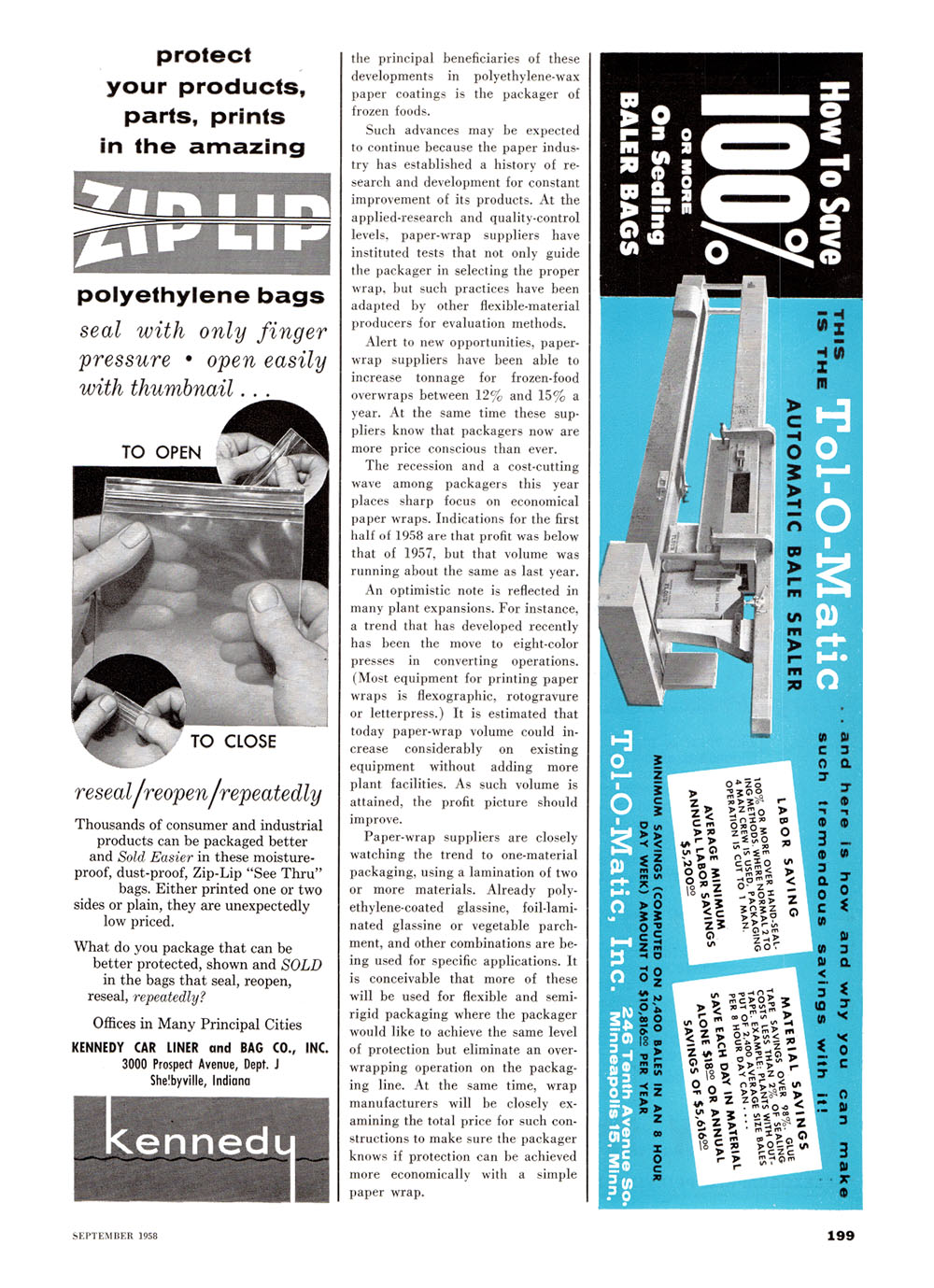


protect
your products, parts, prints in the amazing
polyethylene bags
seal with only finger pressure • open easily with thumbnail. ..
reseal j reopenI repeatedly
Thousands of consumer and industrial products can be packaged better and Sold Easier in these moisture-proof, dust-proof, Zip-Lip "See Thru"ť bags. Either printed one or two sides or plain, they are unexpectedly low priced.
What do you package that can be better protected, shown and SOLD in the bags that seal, reopen, reseal, repeatedly?
Offices in Many Principal Cities
KENNEDY CAR LINER and BAG C0,f INC. 3000 Prospect Avenue, Dept, j Shelbyville, Indiana
the principal beneficiaries of these developments in polyethylene-wax paper coatings is the packager of frozen foods.
Such advances may be expected to continue because the paper industry has established a history of research and development for constant improvement of its products. At the applied-research and quality-control levels, paper-wrap suppliers have instituted tests that not only guide the packager in selecting the proper wrap, but such practices have been adapted by other flexible-material producers for evaluation methods.
Alert to new opportunities, paper-wrap suppliers have been able to increase tonnage for frozen-food overwraps between 12% and 15% a year. At the same time these suppliers know that packagers now are more price conscious than ever.
The recession and a cost-cutting wave among packagers this year places sharp focus on economical paper wraps. Indications for the first half of 1958 are that profit was below that of 1957, but that volume was running about the same as last year.
An optimistic note is reflected in many plant expansions. For instance, a trend that has developed recently has been the move to eight-color presses in converting operations. (Most equipment for printing paper wraps is flexographic, rotogravure or letterpress.) It is estimated that today paper-wrap volume could increase considerably on existing equipment without adding more plant facilities. As such volume is attained, the profit picture should improve.
Paper-wrap suppliers are closely watching the trend to one-material packaging, using a lamination of two or more materials. Already polyethylene-coated glassine, foil-laminated glassine or vegetable parchment, and other combinations are being used for specific applications. It is conceivable that more of these will be used for flexible and semirigid packaging where the packager would like to achieve the same level of protection but eliminate an overwrapping operation on the packaging line. At the same time, wrap manufacturers will be closely examining the total price for such constructions to make sure the packager knows if protection can be achieved more economically with a simple paper wrap.